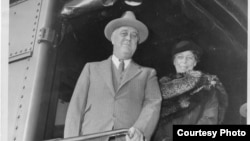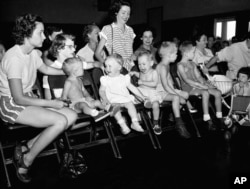Up to this day in 1954 in American history, even a president of the United States, later President Franklin Delano Roosevelt, could be struck down by the debilitating effects of paralysis that is the signature of poliovirus.
The irony is that very few Americans perceived Roosevelt as “handicapped,” according to presidential historians.
On April 26, 1954, hopes were high at the Franklin Sherman Elementary School in McLean, Virginia, where an ambitious effort to test a polio vaccine was taking place. 1.8 million American children along with kids from Canada and Finland were enrolled. At the time it was the largest public health experiment in American history.
Less than a year later on April 12, 1955, researchers announced the vaccine was safe and effective. It quickly became a standard part of childhood immunizations in America.
The last case of naturally occurring polio in the United States happened in 1979. Today, despite a concerted global eradication campaign, poliovirus continues to affect children and adults in Afghanistan, Pakistan and some African countries, including Nigeria.






